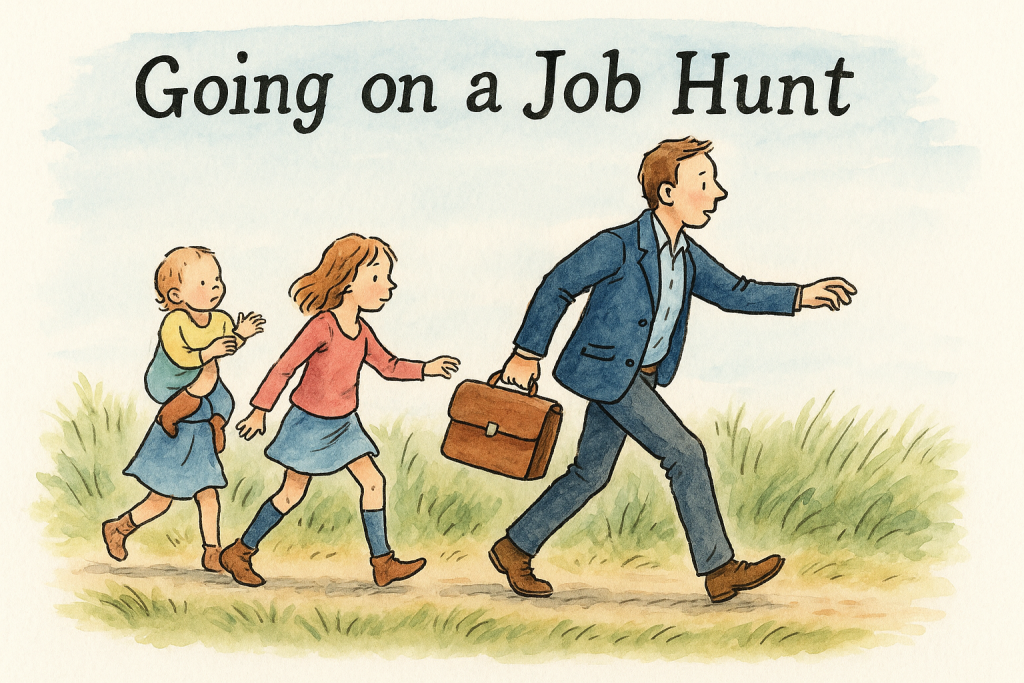Games already teach systems, problem-solving, and creativity. What if we made some that do it on purpose—for the world we’re heading into?
Over the past two decades, I’ve worked on games played by millions. Large projects, built by small/medium and large teams who cared about the right things—mechanics, feedback, pacing, and above all, the experience of learning through play.
We rarely called it “learning,” of course. That word belonged to schools and training manuals, not inventory screens or reticule sweeps. But learning is what it was. Most games teach. Some teach very well.
And that’s been sitting with me lately.
We’re heading into a period where re-skilling isn’t just useful—it’s essential. The rate of change in the tools we use, and the contexts we use them in, is outpacing almost every institution built to prepare people for it. The World Economic Forum suggests nearly half of workplace skills will shift within five years (World Economic Forum, 2023)1. Even if that’s off by a third, it’s still enough to matter.
People will need to learn, quickly and often. But not just facts. What’s needed is the kind of learning that rewires thinking—the slow, frictional, systems-level kind. And most tools built for that purpose aren’t really up to the task.
Games might be.
On Bloom’s, and Where Games Already Live
If you know Bloom’s taxonomy (Bloom et al., 19562), you’ll know it describes levels of cognitive engagement: remembering, understanding, applying, analysing, evaluating, and creating. Most education systems struggle to reach the upper tiers. The resources aren’t built for it, and the pacing doesn’t help.
Games, however—particularly the well-made ones—tend to hover around the top.
They ask players to apply rules in new contexts, to analyse failure and iterate strategies. A good puzzle game requires evaluation. A good strategy game demands synthesis. Even some platformers, in their own way, ask for invention.
It’s not that games are “better” at teaching. It’s just that they often create the conditions where learning thrives: feedback, agency, and meaningful challenge.
James Paul Gee made this point quite clearly in What Video Games Have to Teach Us About Learning and Literacy (2003)3. Games, he argues, enable “situated learning”—where understanding emerges through doing, through action and context, not abstraction. John Seely Brown echoes this in his writing on “learning to be” (Brown & Thomas, 2011)4: that deep learning is social, participatory, and anchored in identity and community.
You don’t have to agree with every line to see that games already operate in this space. You only need to watch someone learn to play Opus Magnum or The Witness.
A Note on Gamification, and Why That’s Not This
Much of what’s called “educational gaming” today is better described as education with some game bits sprinkled on top. Points, progress bars, the occasional animation. Sometimes it works. Often it doesn’t.
Gamification5—at least in its shallow form—is not what I’m suggesting here.
I’m talking about actual games. The kind that respect the player. The kind that are hard in the right places and generous in others. The kind that teach you something not by telling you, but by asking you to try, fail, and try again.
A Moment of Alignment
Right now, there’s a convergence. On one side, we have a deep and growing need for tools that help people learn—really learn—in the face of rapid technological change. On the other, we have a surplus of skilled developers, many of them recently made redundant, who know how to build systems that reward understanding and growth.
It’s a painful overlap. But also a rare one.
Games like Kerbal Space Program, TIS-100, or Return of the Obra Dinn show what’s possible when a designer sets out to make something that stretches the mind as well as the thumbs. These aren’t “educational games,” strictly speaking. But they are educative.
And they hint at something that hasn’t quite arrived yet: games that are built from the start with the goal of helping people become more capable, more adaptable, and more fluent in the kinds of skills the coming decade will demand.
Some Caution, and a Suggestion
To be clear, pedagogy matters. You can’t simply wrap a learning objective in a combat loop and call it meaningful. The work of good education is hard, and it’s worth respecting.
But the work of good game development is hard, too. And there’s not nearly enough of it in most of the tools people are being asked to learn from.
That’s the space I keep coming back to. Not because it’s an easy opportunity—it isn’t—but because it feels like a necessary one.
And maybe, just maybe, the right kind of games are waiting to be made.
Dissappointingly low on Indiana Jones content. Many apologies, please see these Indy-related articles:
– https://benjaminmerrick.co.uk/trusting-instinct-why-best-practice-wont-save-you/
– https://benjaminmerrick.co.uk/granny-weatherwax-indiana-jones-wisdom-for-facing-the-unknown/
- World Economic Forum – The Future of Jobs Report (2023)
https://www.weforum.org/publications/the-future-of-jobs-report-2023/ ↩︎ - Bloom, B. S., et al. (1956). Taxonomy of Educational Objectives: The Classification of Educational Goals. https://en.wikipedia.org/wiki/Bloom%27s_taxonomy ↩︎
- Gee, J. P. (2003). What Video Games Have to Teach Us About Learning and Literacy. Palgrave Macmillan. https://www.amazon.co.uk/dp/1403984530 ↩︎
- John Seely Brown & Douglas Thomas – A New Culture of Learning (2011) https://www.amazon.co.uk/dp/1456458884 ↩︎
- https://en.wikipedia.org/wiki/Gamification ↩︎



